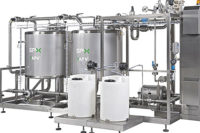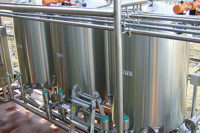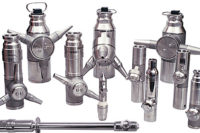
Sanitation is the most critical process in dairy plant operations. It is not only the first step in dairy processing, but also is a continuous process throughout the production day and the last step when production is finished.
Consequently, the effectiveness of the sanitation program is often compromised when production requirements exceed capacity or when inefficiencies are encountered.
Manual and clean-out-of-place (COP) cleaning requirements were covered in a previous column (June 2009). Prior to 1950, essentially all dairy plant equipment was cleaned by manual and COP procedures. Today, all dairy plants utilize clean-in-place (CIP) programs.
In many plants, the systems are highly sophisticated and automated. These CIP cleaning systems have generally increased effectiveness and efficiencies, and enabled the dairy industry to improve quality and extend shelf life. However, many quality problems and shelf-life failures can be traced to failure of these sophisticated and automated systems. Automated CIP systems must be managed.
As with manual and COP cleaning, the effectiveness of CIP systems is dependent upon the application of the basic principles of cleaning: time, temperature, velocity and proper chemical concentration.
Time: Enough time must be allowed for any cleaning process to be successful. In the case of CIP, the time consideration refers to the time at temperature that recirculation is established. Tanks are normally washed at temperature for 20 to 25 minutes while line circuits are recirculated for 15 to 20 minutes. Shortening the time will usually decrease the effectiveness of cleaning. Circulating for longer times than necessary to clean may be detrimental to the process.
Temperature: Every cleaning operation and cleaning chemical is designed to be used at specific temperatures. CIP temperatures for line circuits are typically between 145 and 155





